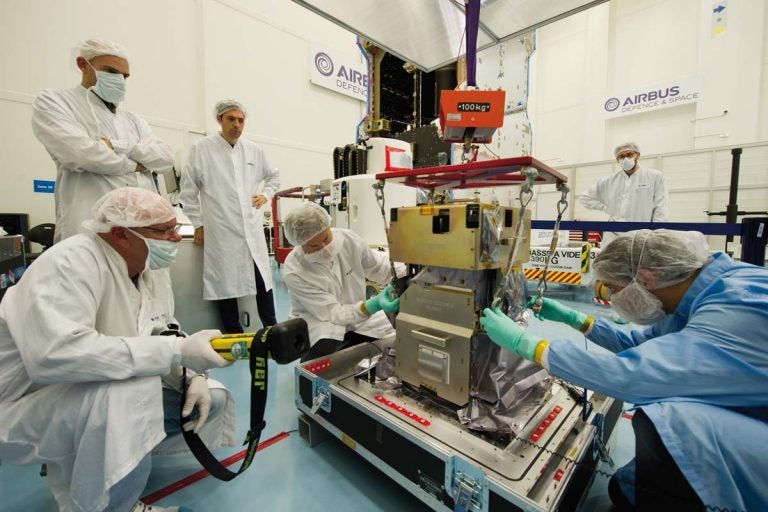An instrument that will provide unprecedented imaging of the Earth’s upper atmosphere has been successfully installed on a commercial satellite that will carry it into geostationary orbit some 22,000 miles above the planet.
The GOLD instrument, which is short for Global-scale Observations of the Limb and Disk, is expected to launch aboard a SpaceX Falcon 9 rocket from the Space Coast by the end of the year. The University of Central Florida is leading the mission; the Laboratory for Atmospheric and Space Physics (LASP) at the University of Colorado at Boulder designed and built the instrument. LASP will also operate the instrument during its two-year mission.
The mission is possible due to a joint agreement with SES Government solutions, which will provide the launch. The mission is a first-of-its-kind partnership between a university and commercial spacecraft operator to enable a NASA science mission. Such an approach may usher in a new era of similar projects giving universities nationwide broader access to getting science research into space.
The GOLD instrument will fly aboard an SES-14 satellite as a hosted payload. Hosted payloads enable NASA to make use of commercial satellite platforms as a new avenue for relatively low-cost science opportunities in space, according to NASA.
The successful integration of the ultraviolet instrument onto the SES-14 satellite this month marks a milestone as the team prepares for launch. Next, the instrument and satellite will undergo a series of environmental tests at Airbus Defence and Space in Toulouse, France, before being shipped to Florida for final launch preparations.
“Launch is almost within sight. The progress is exciting to see, and it’s getting even more exciting,” said Richard Eastes, GOLD principal investigator and UCF scientist. “Integration of the GOLD instrument has gone even better than I’d ever hoped. That’s a tremendous testament to the ability of the instrument and the satellite teams.”
GOLD is designed to capture never-before-seen images of the Earth’s thermosphere and ionosphere, detecting changes in temperature and composition due to space weather activity. This is a critical step in understanding how to predict the impact of space weather events on Earth.
Some of the most dramatic space weather originates on the sun with ejections of plasma and X-rays into space. When directed at the Earth, ensuing geomagnetic storms have the potential to interfere with radio communication and disrupt GPS satellites, impacting everything from airline travel to high-tech farming, satellite TV programming and cell phone connections.
The GOLD mission will make measurements from a longitude of 47.5ºW during its two years of prime mission operations. The satellite has a life expectancy of 15 years.
In addition to building the UV instrument the size of a microwave oven, the Colorado laboratory is providing project management, systems engineering, safety and mission assurance, instrument operations, and public outreach for the mission. Eastes, who is based at UCF’s Florida Space Institute, oversees the project and is building the data center that will process and disseminate GOLD science data.
GOLD is a mission of opportunity and part of NASA’s Explorer Program. NASA’s Goddard Space Flight Center in Greenbelt, Maryland, manages the Explorer Program for NASA’s Science Mission Directorate in Washington. The Explorer Program seeks to provide frequent, low-cost access to space for NASA heliophysics and astrophysics missions requiring small to mid-sized spacecraft.
Other members of the GOLD team include the National Center for Atmospheric Research, the University of California at Berkeley, Computational Physics Inc., and the National Oceanic and Atmospheric Administration.
